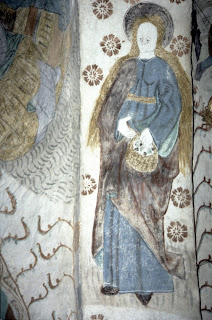"Les offrandes oubliées" by Olivier Messiaen
"Les offrandes oubliées" (1930) is a major achievement of a newly graduated composer, a work that points out the essential traits of Messiaen's music: his preoccupation with rhythm, his modal language (Messiaen is not tonal or atonal composer, but modal) and his Catholic Christian faith. These features, with the later extensive use of birdsong, prevailed throughout Messiaen's career until his death in 1992. Messiaen commented on his faith in an interview in 1961 as follows: "God for me is manifest. and my conception of sacred music derives from this conviction. God being present in all things, music dealing with theological subjects can and must be extremely varied. The Catholic religion is a real fairy-story, with this difference, it is all true. I have therefore, in the words of Ernest Hello, tried to produce 'a music that touches all things without ceasing to touch God'. But, if my music is a spontaneous act of faith, without premeditation, it is by...

